Locations
577 to 600 of 5382 results
-
Camping De Kievit
Camping De Kievit Oudehaske
Oudehaske
from your location
-
Ambush at Oldeholtpade
Ambush at Oldeholtpade
On 12 April, the bridge over the Tjonger in Mildam fell into the hands of the Royal Canadian Dragoons reconnaissance regiment. Because the occupier had blown up many other bridges, the Canadians attached great importance to preserving this bridge for the crossing of other Canadian units. That is why dozens of armoured cars, mobile artillery guns and numerous other vehicles were sent to Mildam that day to reinforce the bridgehead over the Tjonger.
In one of those armoured cars, a Staghound, was 24-year-old Trooper Wilfred Robert George Berry from Ontario. The young Canadian had volunteered for military service in Europe. And had already fought with the Royal Canadian Dragoons in Italy. At the end of February 1945, they were transferred to Northwest Europe.
For Berry, the war ended in Friesland. In Oldeholtpade, on the road to Wolvega, his vehicle drove into an ambush along with at least one other Staghound. In the vicinity of a broken-down German car, German soldiers had hidden with Panzerfausts. The Panzerfaust was a very powerful and easy-to-use anti-tank weapon. The first shot missed, but the second projectile hit the front Staghound, on the side where driver Wilfred Berry was sitting at the time.2 The Staghound went off the road and overturned. The three other crew members got injured, but were able to leave the vehicle and took cover behind the second Staghound. One of them stated:
"[…]Flames burst through the turret, where the officer and I were half in and half out of the hatches. Any skin surface not covered was burned and the flames badly singed our eyebrows, eyelashes, moustaches and hands, sending me and the officer both wounded to the field hospital."3
Immediately after the first Staghound was hit, the second Staghound opened fire on the Germans. Seriously injured, Wilfred Berry remained in the vehicle. After about fifteen minutes of shooting back and forth, the other Staghounds retreated towards Oldeberkoop. The exact reason for this remains unclear. Berry was already dying and was briefly cared for by the elderly Andriesje Dekker-Oosterhof in the vehicle when the shooting had stopped. The tragedy had unfolded right in front of her house. He died in the wreck shortly afterwards.
Berry's remains were eventually transferred to the farm on "De Bult" in Oldeberkoop and buried there. After the war he would be reburied at the Canadian war cemetery in Holten. The other crew members were eventually able to return to their units after receiving medical treatment. The commander only had burns on his face.
The event made a deep impression on the inhabitants of Oldeholtpade. In 1945, a monument to Berry was erected. And in 1965, a street was named in his honour.
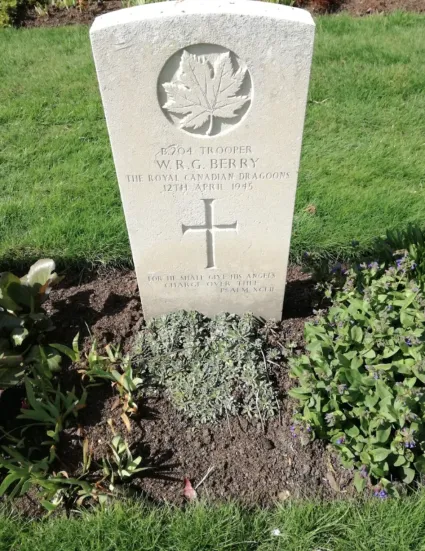 Oldeholtpade
Oldeholtpade
from your location
-
-
TrendingTent
TrendingTent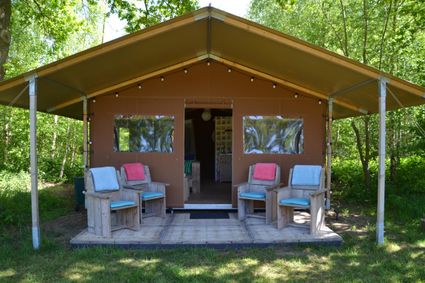 Oudemirdum
Oudemirdum
from your location
-
TOP IJlst
TOP IJlst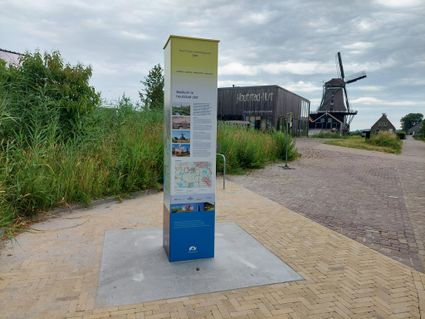 IJlst
IJlst
from your location
-
Organic dairy farm Mts. J. en S. Bouma
Organic dairy farm Mts. J. en S. Bouma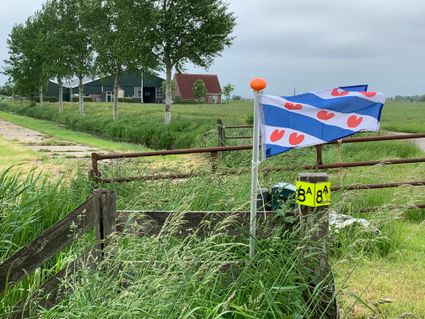 Grou
Grou
from your location
-
Sint-Laurentiuskerk Kimswerd
Sint-Laurentiuskerk Kimswerd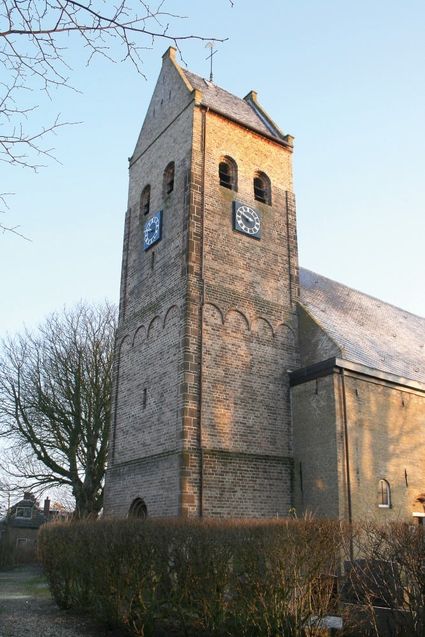 Kimswerd
Kimswerd
from your location
-
Booming cannons
Booming cannons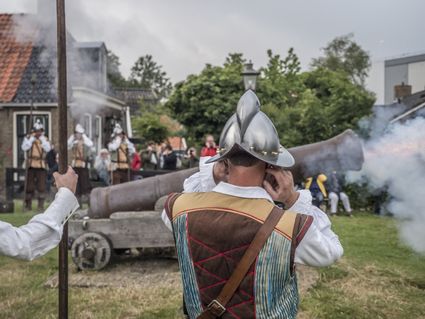 Sloten
Sloten
from your location
-
Menaam (Menaldum)
Menaam (Menaldum)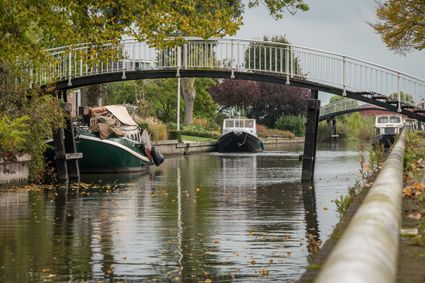 Menaam
Menaam
from your location
-
Bibliotheek Bolsward
Bibliotheek Bolsward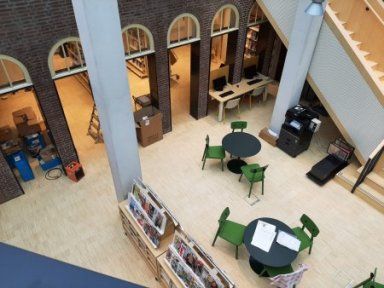 Bolsward
Bolsward
from your location
-
Veerpont Oldelamer
Veerpont Oldelamer Rotstergaast
Rotstergaast
from your location
-
De Linde
-


Accept cookies to see this content.
De Linde
 Spanga
Spanga
from your location
-
-
Vissershuisje aan de waddenzee
Vissershuisje aan de waddenzee Paesens
Paesens
from your location
-
Jellema Tweewielers
Jellema Tweewielers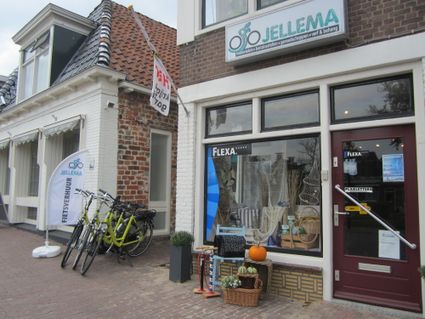 Ferwert
Ferwert
from your location
-
Groepsaccommodatie OmmeRomte
Groepsaccommodatie OmmeRomte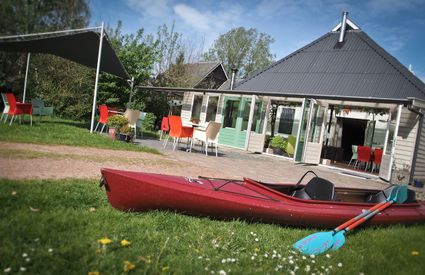 Dokkumer Nieuwe Zijlen
Dokkumer Nieuwe Zijlen
from your location
-
Noordwolde the first village to be liberated by land
Noordwolde the first village to be liberated by land
In the evening of 11 April 1945, units of the Canadian Reconnaissance Regiment Royal Canadian Dragoons arrived at Dwingeloo, just before the so-called Frieslandriegel. This line of defence had been constructed shortly before by the work of many Dutch forced labourers. However, the line was hardly occupied and eventually turned out to be incorrectly constructed.
The Dragoons' task was to scout the road well ahead of the rest of the Canadian units. And they noted that the Germans in this area were barely able to defend themselves effectively. Partly for this reason, it was decided on 11 April that units of the 3rd Canadian Infantry Division and supporting units would make a jump to Leeuwarden in the following days. If the Frisian capital and possibly the rest of Friesland could be taken, the Germans would be trapped in the western part of the Netherlands. After all, large parts of Overijssel and Gelderland had also been liberated at this point.
The infantry had to advance through Zwolle, Meppel, Steenwijk, Heerenveen to Leeuwarden. To get them to Leeuwarden as soon as possible, all kinds of extra vehicles had been arranged. Meanwhile, the Royal Canadian Dragoons, and not much later another reconnaissance regiment, the Duke of York´s Royal Canadian Hussars, would enter Friesland to scout the planned main route there. And to create as much chaos as possible among the German defenders.Thanks to the citizens of Dieverbrug in Drenthe, an emergency bridge was built over the Drentse Hoofdvaart canal so that the Canadian vehicles could advance to Friesland. Then, on the morning of 12 April, the Dragoons were the first Canadian land unit to enter the province of Friesland. The village of Noordwolde was the first to be liberated.
Although this first Frisian village could be taken without a fight, there was brief fighting immediately north of Noordwolde. About twenty Germans and Dutch accomplices tried to delay the Canadians. After a short fight, the Germans fled the scene, leaving all their equipment behind. Others, including ten Dutch accomplices of the Landwacht and Ordnungspolizei, were captured.But the very first liberators to set foot on Frisian soil were French SAS paratroopers from the 3e Régiment de Chasseurs Parachutistes. Just over 700 of them were dropped over Drenthe and south-east Friesland on the night of 7 to 8 April. Their mission was to support the Allied ground operation. They did so by creating chaos behind German lines, capturing bridges, and carrying out all kinds of operations together with the resistance. They had to keep this up until the Canadian ground units reached them. A small proportion ended up at Appelscha and Haulerwijk and carried out their assignments there. In the performance of these assignments, 21-year-old Chasseur de 2e Classe (Private 2nd Class) Henri Pintaud was killed on 8 April.
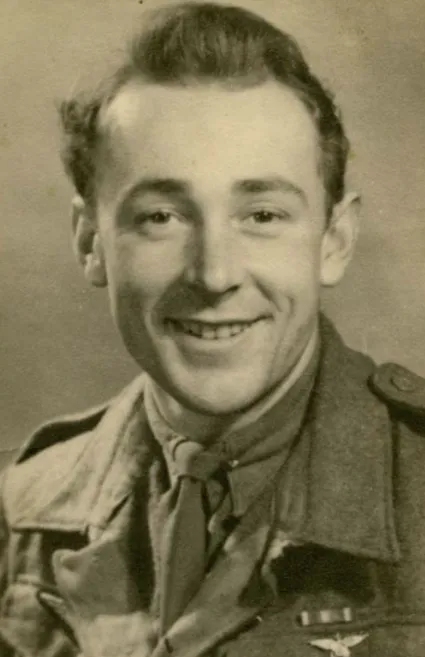 Noordwolde
Noordwolde
from your location
-
-
Tusken de Marren - Chalet Meine luxe 4p
Tusken de Marren - Chalet Meine luxe 4p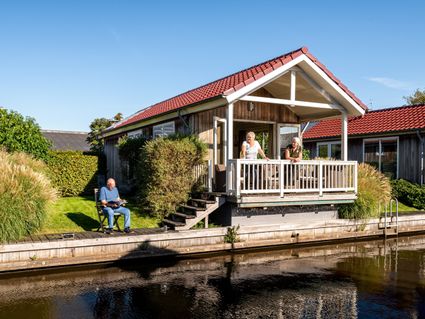 Akkrum
Akkrum
Direct boekbaar
from your location
-
Yachtcharter 2000
Yachtcharter 2000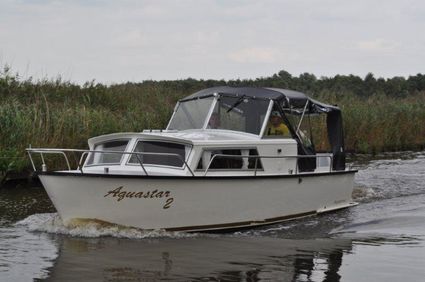 Heerenveen
Heerenveen
from your location
-
Nij Wybranda - de Jister
Nij Wybranda - de Jister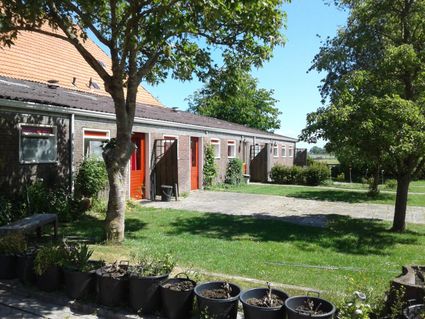 Boazum
Boazum
Direct boekbaar
from your location
-
Fietsverhuur SWF
Fietsverhuur SWF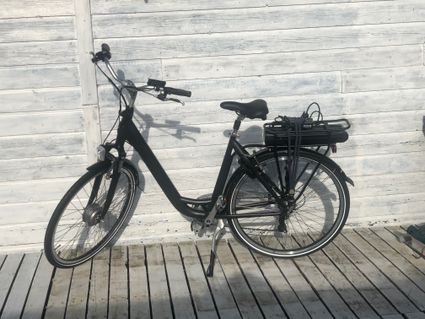 Stavoren
Stavoren
from your location
-
Ried: bodemdaling
-


Accept cookies to see this content.
-

-
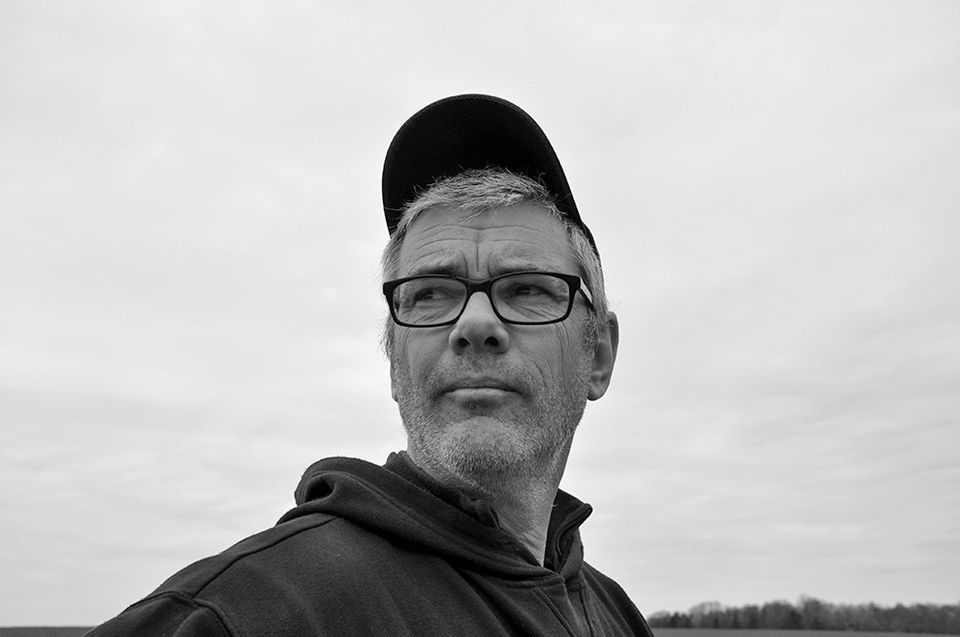
Ried: bodemdaling
(beluister hier het audioverhaal)
Met het blote oog is het moeilijk te zien, maar de bodem van deze omgeving ligt laag. Op sommige plekken, zoals hier bij het dorpje Ried, gaat het om een paar centimeter, maar er zijn in de buurt kommen die wel 30 centimeter lager liggen dan twintig jaar geleden.
Die bodemdaling is een belangrijke reden dat er een nieuw gemaal komt, dat het witte gemaal dat je verderop aan de Rie ziet liggen zal vervangen. Zowel de oude als de nieuwe kunnen 140 kubieke meter water per minuut naar hoger gelegen gebieden afvoeren bij hoge waterstanden. Ook doet het gemaal dienst bij stortbuien, die steeds vaker voorkomen.
Het gemaal, dat hier in de jaren zeventig van de vorig eeuw kwam, heet ‘De Mieden’. Een toepasselijke naam, want dit Friese woord betekent een laaggelegen land aan de rand van het dorp, land dat alleen gebruikt kon worden om van gras hooi te maken en aan het vee te geven.
Een jaar of vijf geleden bleek renovatie van het gemaal nodig, maar dat bleek lastig, omdat de vijzels diep genoeg moeten zijn als de bodem nog verder zakt. Daarom besloot Wetterskip Fryslân om een hele nieuwe te laten maken, die ook op verdere bodemdaling is berekend.
Hoe het komt dat de bodem is gedaald? Zout- en gaswinning. Vanaf 2004 is op een handvol locaties hier in de omgeving namelijk gas uit de bodem gewonnen. Toen bleek dat de bodem meer daalde dan was verwacht, is daarmee gestopt. Bij Tzummarum en Sexbierum is lange tijd zout uit de bodem gehaald, maar nu wordt overgestapt op winning uit de bodem van de Waddenzee. De bedrijven die de stoffen winnen, Vermillion en Frisia Zout, betalen mee aan gemalen als deze om de waterhuishouding te regelen.
Ingesproken door:
Beeldend kunstenaar Rob Sweere zit al sinds 1989 in het vak. Hij werkt met permanente monumentale installaties in de publieke ruimte en maakt tijdelijke installaties voor tentoonstellingen en festivals. Wereldwijd werkt Rob met groepen mensen.
Zo heeft hij Joop Mulder leren kennen tijdens Oerol. “Joop dacht op een schaal waarop ik zelf ook graag denk, maar die in de visie van anderen niet of weinig voorkomt. Samen met Joop kon je echt tot de max denken. Hij was niet bang en gaf vertrouwen. Jammer dat velen in onze omgeving niet zo onbevangen durven te dromen en ervoor te gaan. Ik zal Joop missen als dromer en als reisgenoot in deze maatschappij.”
Dit verhaal is onderdeel van de route Gemalen Verhalen van Sense of Place Ried
Ried
from your location
-
-
Veerpont Leeuwarden Prinsentuin
Veerpont Leeuwarden Prinsentuin Leeuwarden
Leeuwarden
from your location
-
Restaurant Spiezz
Restaurant Spiezz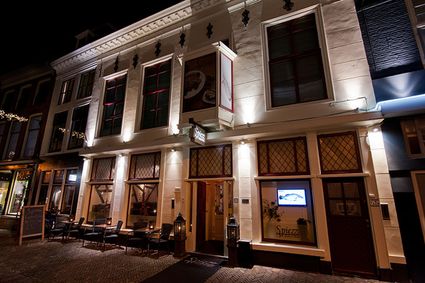 Leeuwarden
Leeuwarden
from your location
-
Camping De Oosthoek
Camping De Oosthoek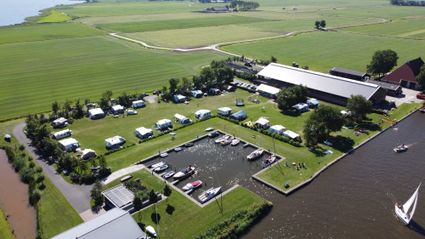 It Heidenskip
It Heidenskip
from your location
-
Strand en kitesurf strand het Mirnser Klif
Strand en kitesurf strand het Mirnser Klif Mirns
Mirns
from your location

